Android Phone Fans |
- Is this how we’ll game on the LG G Watch and Moto 360? [VIDEO]
- LG G3 Developer Edition leaked for T-Mobile, micro SD card slot exposed
- Another good app bites the dust: Springpad is shutting its doors [RUMOR]
- HTC M8 Ace leaked in official documentation, shows off huge speaker grill
- Yelp will soon allow users to upload videos via the app, arrives next month
- How to take better photos with your Android phone
- T-Mobile VoLTE heads to Seattle
- Latest Pushbullet update allows you to see and manage notifications on all your devices
- Apple to issue fix for iMessage users who transition to Android
- Quick deal: Get $10 in Amazon Coins for downloading these free apps by May 31st
- Nest recalls 440,000 units, says ads will not be on their thermostats
- Phan Favs: The best music app for Android [Results]
- NVIDIA says the mainstream tablet and smartphone market is no longer their focus
- “OK Google” command now available for all English Chrome users in the latest beta
- First official look at the LG G3 Quick Circle Case [VIDEO]
| Is this how we’ll game on the LG G Watch and Moto 360? [VIDEO] Posted: 22 May 2014 05:32 PM PDT A post on Reddit is gaining some steam after an app developer inadvertently managed to get his game running on a tiny smartwatch. The game in question is called Puk and although technically not built for the smartwatch, seems to running perfectly fine on the Omate Smartwatch. The developer attributes smartwatch compatibility to the framework of the “coronaSDK” which plays nice with a variety of display sizes — even itty-bitty ones found on smartwatches. And while we know Android Wear’s primary function is simply to relay notifications from the smartphone to the wrist, we can’t help but wonder if games will eventually find themselves ported to the LG G Watch or Motorola Moto 360. Now, we know all games wont make the transition so well, but for casual games like Puk, they seem right at home on the small, really small screen. |
| LG G3 Developer Edition leaked for T-Mobile, micro SD card slot exposed Posted: 22 May 2014 04:39 PM PDT We’ve seen enough of the LG G3 we really didn’t think another leak of the phone “in the wild” would get us going. We were wrong. What you’re looking at before you is an alleged LG G3 Developer Edition, leaked in the wild, by none other than @evleaks. The particular model in question is said to be a “lunchboxed” version of the phone, house inside a special casing to keep the design from spilling out onto the net. It’s not like that’s much of a secret anymore. The high resolution images of the phone give us a few close ups of the display and as was to be expected from a 2K Quad HD display — not a pixel in sight. The fact that this version of the phone is a developer edition of the phone for T-Mobile leaves us scratching our heads and hoping we’ll still be able to pick it up on payments. In any case, check out the gallery below for a few more shots of the LG G3 before it is officially unveiled on May 27th. 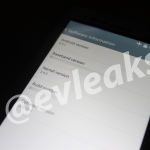  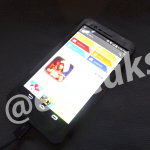  [Evleaks] |
| Another good app bites the dust: Springpad is shutting its doors [RUMOR] Posted: 22 May 2014 03:55 PM PDT Man, it’s hard out there for app developers. You can provide a great service, make a beautiful and functional app to go along with it, but if you fail to monetize it, you’ll be forced to shut the entire thing down. That’s what’s happening to the note taking app Springpad. They’ve been around almost since this Android thing began — 6 years and running — but after raising $7 million, they’ll be officially throwing in the towel and like Catch before it, claiming defeat against the juggernaut that is Evernote. Nothing on exactly when Springpad plans on shutting everything down. Word of the closure was provided by a source close to The Verge, which mentions we could see a new product from the folks at Springpad. We’ll let you know should we hear something a little more official. |
| HTC M8 Ace leaked in official documentation, shows off huge speaker grill Posted: 22 May 2014 02:48 PM PDT The HTC M8 Ace is another rumored Android device that has managed to leave us with more questions than answers. As HTC continues hyping their One M8 flagship, it’s clear they’re also eying other markets by offering a wide arrange of smartphones to fit everyone’s needs (and budget). We got a brief (blurry) glimpse of the M8 Ace back in April and more recently, rumors suggested the phone could be a lower-cost version of the One M8 — around $480 — using a plastic unibody construction instead of premium aluminum. Earlier this week an alleged press image of the HTC M8 Ace hit the webs (see above), which lines putting focus on the “curves” of the device. This followed a tweet by HTC teasing “more beautiful curves coming soon,” indicating they could be talking about the HTC M8 Ace. Today, we’re getting another good look at the HTC M8 Ace as it appears in official documentation courtesy of TENAA (think China’s version of the FCC). The images give us a pretty good look at both the front and back of the device, showing off HTC’s trademark BoomSound front facing speaker. We have to admit, HTC is going a little overboard with the speaker grill there. What’s more is contrary to previous rumors, @evleaks is now saying the M8 Ace will feature a 4.7-inch display, similar to last year’s HTC One M7. We should note, that 2 holes on the back aren’t HTC’s Duo Camera system, but rather an oddly placed LED flash above the camera.
Earlier this week an alleged press image of the HTC M8 Ace hit the webs (at the top of the post), which lines putting focus on the “curves” of the device. This followed a tweet by HTC teasing “more beautiful curves coming soon,” indicating they could be talking about the HTC M8 Ace. |
| Yelp will soon allow users to upload videos via the app, arrives next month Posted: 22 May 2014 01:19 PM PDT As a big-time Yelper, I’d be lying if I said I wasn’t excited about a new feature making its way to Yelp’s mobile apps. If a picture is worth a thousand words, a video is worth a million. Soon, users will be able to capture short videos using the app for uploading to Yelp’s new “photos & videos” section. The new feature will first rollout to Yelp’s “Elite” users — those who have proven themselves by submitting quality reviews and content over the years — but can be viewed by any of Yelp’s millions of members once uploaded. After the initial introduction phase, Yelp says they’ll open up the feature to everyone else. Before anyone gets any ideas of uploading anything in appropriate, Yelp says they’ll be filtering videos constantly to ensure nothing questionable turns up on the site.
Like Instagram, video clips can be up to 12 seconds in length, but it’s uncertain if Yelp will use a similar record/pause method to help capture multiple scenes (you can imagine how helpful it’d be to view dinning rooms, bathrooms, and/or multiple food dishes). At first, users will need to stick to using the app to record videos, but Yelp says they have plans to allow uploads from a device’s gallery down the line. Capturing video is a great to show off the ambiance or noise level of a restaurant or business and only further catapults Yelp as the go-to service for reviews and restaurant discovery. The video update will arrive for both Android and iOS next month. |
| How to take better photos with your Android phone Posted: 22 May 2014 12:11 PM PDT
The smartphone camera is such a fickle beast. In one situation your photos turn out darn near professional. In another you feel shame at the thought of even sharing the blurry, dull results on Facebook or Instagram. When you do, your handwork is typically masked by a thick layer of filters applied haphazardly via your favorite app. Stop that. Stop that right now. Taking the best smartphone photo possible doesn't start with a 40MP camera. It doesn't start when you begin flicking through those filters. It starts before with a bit of thoughtful planning based on some basic concepts even movie photographers can keep in their tool belt. We're hear to show you how to get the most out of your Android phone's camera, regardless of its megapixel rating, with a few helpful tips, tricks, and apps. Step 1: Take better photosGetting better shots with your Android phone starts before you even tap the shutter button. To get the perfect photo, it helps to have a basic understanding of some photographic principles that can make your images look great no matter what the megapixel rating of your smartphone's camera is. Let's take a minute to talk about lighting and photo composition. Use lighting to your advantageIn most situations you won't have a pro lighting rig to illuminate your subject and boost the color and clarity of your final shot. That doesn't mean you can't use environmental lighting to your advantage, however. When setting up a shot, first consider the light sources in the surrounding area — these include natural light from the sun as well as any artificial light from lamps and other fixtures. In almost all cases, rely on natural light as much as possible. It plays much nicer with nearly every camera and provides light at a color temperature that looks, well, more natural.  An example of an image with poor lighting showing both underexposed and overexposed areas. Artificial environmental lighting can often have a negative impact on your photo. Incandescent bulbs can give off a dull, yellowish hue while fluorescent lighting can at times be a bit too harsh and bright. Natural light sources typically provide a warm light that won't tint your final photo or wash out your subject. Pro tip: Whenever possible, avoid using your camera's flash! Once you have established the best light source for your photo, position your subject (or your camera) in a manner that best utilizes the light. In nearly every case you want the source of light to be shining at your subject but not directly into your camera's lens. Framing a shot with a light source facing the camera will flood the sensor with too much light and overexpose the entire image. Lighting from the side could result in awkward shadows or underexposed areas in your shot. Once you have gotten the hang of how to use light to your advantage, you can begin experimenting with how you frame photos in regards to a light source. For instance, getting the right lighting from behind a subject can result in an interesting silhouette effect. Understand exposure An (artificially exaggerated) example of underexposure. Exposure, by its most basic definition, relates to the amount of light that enters the camera sensor and its effect on overall image brightness. In a standard digital camera exposure is adjusted with a combination of aperture, shutter speed, and ISO. The three combine to dictate how much light enters the camera and how sensitive the camera is to that light. In a well-lit situation, a low light sensitivity is suitable for capturing the scene in plenty of detail. In low-light situations a higher sensitivity is required, though it can result in a "noisier" (i.e. grainier) image.  An (artificially exaggerated) example of overexposure. For the typical Android smartphone's stock camera software, users are not provided with much in the way of manual exposure adjustments. Aperture and shutter speed are usually locked in and overall exposure is determined automatically based on the camera's focus. If anything, a manual adjustment simply labeled "Exposure" might be available. This control in most cases operates similarly to a manual ISO adjustment. The Exposure control takes the form of a simple slider that can be moved to adjust the overall brightness of an image before a photo is taken.  A more optimal (but not quite perfect) exposure. Third party camera apps (typically the more expensive ones) offer a greater range of manual control, and many even allow the user to pinpoint an area of the image from which to base auto-exposure parameters independently of the camera's focus. Set the white balanceMost Android camera apps offer some form of white balance adjustment, though the level of manual adjustability varies. White balance is an important parameter for capturing colors accurately, determining the baseline temperature for white given the light source. Users are typically able to pick from a variety of preset white balance options based on various lighting conditions in addition to an auto mode that will adjust white balance dynamically. If you're lucky (or if you have purchased an advanced camera app) you will be able to manually set white balance to better suit your scene. White balance is typically manually adjusted by focusing on a white object subjected to the same lighting conditions you will be shooting in. Keep it focused Keep the camera steady and make sure your subject is in focus. Perfect lighting and exposure settings don't count for much if your image is out of focus. Take that extra second before firing off the shutter to make sure the subject of your photo is in focus. Nearly every Android smartphone offers autofocus, but most will take a second to settle after tapping the shutter and before capturing a photo. It is important to keep your hand steady and hold the image in focus until the camera's shutter fires. Most Android cameras also offer the ability to manually and dynamically focus on different areas of an image by tapping on your smartphone's display. This reorients the focus and can often be deployed to create interesting effects. The popular “bokeh" effect is created when the subject of a photo is in focus while the background is artistically blurred. True bokeh images are hard to capture with smartphone camera hardware, but apps like Google Camera have special capabilities built-in to simulate the trendy look. A note on image composition
All things considered, an image is ultimately only as good as its overall composition. One of the most basic principles of photography is the "Rule of Thirds," which breaks down the plane of an image into nine quadrants based on equal horizontal and vertical divisions. There's a good chance that your smartphone camera app includes the option to show a grid overlay that acts as a visual representation of this division by thirds. The basic concept of the Rule of Thirds is to place your subject or subjects at the points where these quadrants intersect or along the grid lines. Doing so creates a visually balanced composition. The Rule of Thirds can further be employed, bent, and manipulated to create intriguing photographs that capture the viewers attention and draw the eyes toward the image's most interesting aspects. With all of the above said, the reality is that not every situation presents the perfect opportunity to capture a photo. Often lighting conditions will be poor, the subject will be moving fast, or the entire moment could be too fleeting to worry about the finer aspects of composition. In these cases sometimes you might have to settle for capturing the memory rather than the perfectly executed shot. Luckily, plenty of options exist for improving all photos after the fact. Step 2: Shoot and edit your photos with these appsNow that we understand the basics of taking a better photo, how do we capture and edit it? No, we don't mean cropping it, slapping on an Instagram filter, and calling it a day. We want to dive a little bit deeper than that in order to get the most out of your final photograph. Here are some great apps to consider when shooting and editing with your Android device along with tips on how to use them. Google Camera
Google Camera features a great, simple user interface to get the most out of your phone's camera. Use it as an alternative to the stock camera app on your phone and gain instant access to several unique photo modes and effects. Google Camera offers pre-shot enhancements like a grid overlay, exposure adjustments, and an HDR mode for less than ideal lighting conditions. It also offers the nifty Lens Blur mode for creating that shallow depth-of-field (bokeh) effect that is all the rage these days. You can also create 360 degree Photo Sphere images as well as gorgeous panoramic shots. Google Camera, unlike some of the other software mentioned here, does not come with it's own array of post-production adjustments and filters. Combine it with an app like VSCO Cam or Photoshop Express and you are in business. Camera FV-5
If you want the power of a DSLR in your Android device, Camera FV-5 might just be the solution. It offers tons of pre-shot camera adjustments that you just won't find in any other app for Android, bringing a manual photo experience unlike any other. With Camera FV-5 you can manually tweak exposure, ISO, focus mode, white balance and more all in a user interface that graphically mimics what you would find on the back of an expensive pro camera rig. Camera FV-5 also brings shooting modes not available in most stock Android cameras. These include long exposure for night shots and the ability to capture HDR time-lapse photos. A self timer is available in case you want to jump into one of your perfectly framed shots (tripod recommended). All that power is going to cost you, though not as much as the DSLR this app practically replaces. $4 couldn't be better spent. VSCO Cam
Hands down our favorite photo app for Android. Before snapping the shot, VSCO Cam's camera mode provides several grid options for framing and composition, a white balance lock, and the ability to set exposure and focus independently. That will make fairly easy work of the steps we described above, but VSCO Cam's real power comes in editing photos after the fact. The first elements you will want to mess around with are exposure, color temperature, and tint. These three parameters, all easily adjustable via sliders in VSCO Cam, should help you dial in the brightness and color of your image to better reflect the scene you aimed to capture. A variety of cropping options can help get your image ready for social sharing or otherwise tidy up an image for tighter composition. After that the sky is the limit with a handful of other helpful tools. We particularly like VSCO Cam's ability to independently adjust the shadows and highlights of your images. This allows finer control over brightness by targeting only specific areas of the image. Adding highlight and shadow tints can flavor a photo in unexpected ways, but we suggest doing so subtly. Pro tip: long-press the image in edit mode to get a before and after preview. VSCO Cam also includes filters and advertises them as a main aspect of the app. We don't blame them, the filters are indeed great (and you can purchase dozens beyond what come included with the app), but wait to apply a filter until after you have made some finer image adjustments as described above. One great aspect of VSCO Cam's filters is the ability to adjust how they flavor a photo via the filter level slider. Again, subtlety is key here. Sometimes just the lightest touch of a filter can do wonders for your photo, producing a look that is less auto-generated and more artistic. Snapseed
Snapseed is another fine photo editing app to consider. It offers many of the same features as VSCO Cam in addition to a few helpful tools for photography newbs and experts alike. If you have no idea where to start with editing a photo, simply use Snapseed's Auto Correct function. This will crunch some data about your photo and apply tweaks to reign in brightness and color while offering other enhancements. In many cases, this might be enough to produce a pretty stellar final product. If you're not happy with the final outcome or want to take your photo in a different direction, Tune Image provides an array of manual adjustments to experiment with further. The prerequisite array of photo filters are here as well, providing even more options if you have yet to track down the perfect vintage effect in another photo app. Another nifty feature is Snapseed's Selective Adjust, which allows you to tweak only a specific area of an image, letting you leave the good parts of a shot untouched while sprucing up the regions that need some work. This tool can also be deployed creatively for some pretty sweet results. As an Android user you already have access to some of these functions, though you might not know it. Google acquired Snapseed developer Nik Software back in 2012 and has since integrated many features of the photo editing app into Google+. On the flip side, Snapseed offers excellent integration with Google-powered social network, making sharing and backing up your images easier than ever. Photoshop Express
When it comes to photo editing, perhaps no name is more recognizable than Photoshop. Photoshop Express gives you a taste of that editing power without the price tag, offering a free app to tweak and refine images on your mobile device. Basic tools allow you to rotate, crop, and straighten your photos as well as remove red eye, while Auto-Fix will correct for contrast, exposure and white balance with one touch. Deeper editing abilities can further adjust color, clarity, highlights, shadows, and more. Of course you get filters, as if we should even have to mention that at this point. But again: do not rely on filters alone to make your photos great. A great #nofilter shot can oftentimes be more appealing than a faded, sepia-toned version of the same. Alright, no excuses. You now have everything you need to take your Android photography to the next level. From planning the shot to polishing it up, it's that little extra that will take your photos from ordinary to extraordinary.
|
| T-Mobile VoLTE heads to Seattle Posted: 22 May 2014 12:04 PM PDT T-Mobile has announced the addition of voice-over-LTE in the Seattle market. What does that mean? Nice, crisp calls over T-Mobile’s advanced LTE network, basically. VoLTE will ensure more reliable phone calls, and even if you happen to veer off the path of LTE in your city you will be seamlessly transitioned to HSPA-based radio bounds with no interruption to your call. T-Mobile VoLTE also comes paired with HD Voice calling, so the benefits of VoLTE are both tangible and intangible. Unfortunately the roster of VoLTE-equipped T-Mobile phones is quite small right now — only the LG G Flex, Samsung Galaxy Note 3 and Samsung Galaxy Light have the capability to use it. We imagine T-Mobile won’t let many other phones launch without the functionality, though, as they say they have only just begun. Give it a shot if you stay in the upper left corner of the country. [via T-Mobile] |
| Latest Pushbullet update allows you to see and manage notifications on all your devices Posted: 22 May 2014 11:43 AM PDT Pushbullet has just received yet another amazing upgrade that many of you will want to get your paws on ASAP. The update allows you to sync mirrored notifications with not only your Chrome-equipped PC, but also other Android devices that have Pushbullet installed. You might wonder why someone would need this when they could just install the same apps on their tablet, but this is really useful for those who have tablets and want to be able to see notifications that are coming in on their phones that they may not otherwise be able to get on their tablet (for instance, a missed call or text message). And, well, some people simply don’t always have the same apps installed on both their phone and tablet. If nothing else, think of it as the ultimate convenience feature that you don’t have to use if you don’t want or need it. I should note that Pushbullet considers this functionality as beta status. Also, you’ll need to have the new setting enabled on each device you want notifications mirrored to. That aside, we imagine nothing will be too much of an issue for you to get your paws on this extremely useful feature. Pushbullet is sitting on the Google Play Store so grab it for all the devices in your arsenal. After that, don’t forget to check out our list of cool things to do with Pushbullet. [via Pushbullet] |
| Apple to issue fix for iMessage users who transition to Android Posted: 22 May 2014 09:43 AM PDT Kind of odd for us to be reporting on an iPhone update, no? Well, that’s because this particular update could have key implications for those who foresee themselves leaving the bitten fruit platform for the land of the robots. Re/code reports that Apple has identified and acknowledged a server-side issue that affects iMessage users. Apple didn’t outright say what the issue was, though there’s reason to believe that they are referring to a bug where iMessage users who switch to a non-iOS phone and don’t deactivate their phone numbers fail to receive text messages on their new phone. Whether Apple is too stubborn to admit that the issue they’re fixing is for users who may be leaving their platform is another fun story for another day, but we’re glad to see they’re going to do something about it instead of keeping less tech-savvy consumers who may not have known about the need to deactivate iMessage before switching platforms in the dark. Are you currently faced with this issue? You’re quite the lucky person — we just so happen to have a handy little guide for those of you who want to switch back to Android and make sure this doesn’t affect you. It’s fairly simple, so be sure to give it a good read before you go and trade your iPhone in for the next hot Android phone. |
| Quick deal: Get $10 in Amazon Coins for downloading these free apps by May 31st Posted: 22 May 2014 09:09 AM PDT There’s nothing like free money (even if that money can only be spent on apps and games from Amazon’s Appstore). Amazon is giving folks 1,000 Amazon Coins — that’s $10 — to download the following games and apps for free:
All of which can be accessed on this handy page right here. After you’ve redeemed your 1,000 coins you can buy any premium app or game you want from the Amazon Appstore — we recommend one of the Grand Theft Auto games if you haven’t already given those a go. Be fast, as this promotion will only last until the end of this month. |
| Nest recalls 440,000 units, says ads will not be on their thermostats Posted: 22 May 2014 08:14 AM PDT Despite Google suggesting smart thermostats could have ads in the future, Google-owned Nest CEO Tony Fadell has come out to nip the fears in the bud — Nest thermostats will NOT be infused with ads. It’s unfortunate that Fadell had to come out and assuage fears of those who let their imagination get the best of them, but it’s hard not to think about the worst when it comes to statements like the one Google made to the SEC. We imagine Google would definitely put ads everywhere if they could get away with it, though potential backlash and the effects of negative public opinion would likely deter them from ever going too far. Fadell saw fit to remind everyone that although Nest is a Google-owned entity, they are completely and independently controlled by their own internal management team — just as they were before the big acquisition. It hasn’t been a very pleasant week for Nest thus far, as the company had to recall 440,000 Nest units due to a software feature that has been deemed potentially harmful in the event of emergencies. It was the “Nest Wave” feature, which allowed users to wave their hands to silence a fire or carbon monoxide alarm instead of having to physically interact with it. Nest’s fear (which is really the Consumer Product Safety Commission’s fear) is that the feature could potentially silence or delay an alarm unintentionally. Nest says they’ve had no reports of damages caused by the feature just yet, but they want to take preventative measures to make sure nothing happens in the future. As such, they are urging existing Nest owners to connect their alarms via WiFi and download the latest update that will disable the Nest Wave feature. We’re not sure how long it will take this feature to come back, or if it will ever return. But it’s better to be more safe than sorry, so if you have one of these alarms then be sure to grab that update as soon as possible. [via re/code] |
| Phan Favs: The best music app for Android [Results] Posted: 22 May 2014 08:03 AM PDT
Phan Favs is a recurring feature that turns the tables and asks you, the readers, about the best apps and games. It's your turn to drop some knowledge on us! Read more. Music has often been called the “universal language,” and it makes sense. Almost everyone on Planet Earth listens to some type of music. It’s no surprise that there are so many music apps to choose from in the Google Play Store. Whether you’re playing local media, cloud content, or using a subscription service there is something for you. Last week we asked you to tell us which music apps you love, and now we have compiled the results into a Top 5 list. Enjoy! 1. Google Play Music
I’m starting to notice a trend. Phandroid readers love Google apps, and why wouldn’t you? Google Play Music is one of the best music apps available on any platform. It combines all of the common music functions into one app: playing local media, streaming from the cloud, purchasing music, and a subscription service. Users can upload up to 20,000 of their ow songs to the cloud and listen to them anywhere, or get access to the full Google Play library for $10 a month. It’s no surprise this app won by a landslide. 2. Poweramp
While Google Play Music does almost everything, Poweramp takes a more focused approach. This app does one thing, but it does it better than any other app out there. If you have a large library of local media to play, and you want tons of control over how it sounds, and the ability to play many file types, this is you app. Poweramp is definitely the most powerful music player in the Store. 3. Spotify
One of the first music subscription services to gain mainstream popularity is Spotify. You get access to one of the largest music libraries on the planet, and you don’t even have to pay for a full subscription. Spotify recently made listening to music on mobile free, but in order to get some of the power user features you will need a subscription. You can get one for as little as $5 a month. Spotify is a great option for the music junkie that needs all music. 4. Pandora
Pandora has been around for a long time. A really long time. Still, it is an extremely popular music service. Pandora’s claim to fame is the personalized stations it creates based on your likes and dislikes. Many people swear by their Pandora stations. After you curate a station for a while it becomes the only thing you want to listen to. It’s no wonder so many people still use this service after so many years. 5. Double Twist
The most beautiful app on this list might be Double Twist. This gorgeous app is a music player, podcast manager, and it can sync with iTunes. That last feature is especially useful for any Mac Android users. Double Twist can also AirPlay music and videos with an optional in-app purchase. If you’re looking for a well designed app to play music this is one of the most stunning ones you will find. *** Those are your picks! Thanks for sharing your favorite apps with us. Do you agree with your fellow readers? If you think your favorite app should have been on the list make your case for it in the comments. Check out the chart below to see how the voting was spread out among the top ten apps. We’ll be back again soon with another edition of Phan Favs!
|
| NVIDIA says the mainstream tablet and smartphone market is no longer their focus Posted: 22 May 2014 06:36 AM PDT Once upon a time NVIDIA made plays to try and get into any smartphone or tablet they could. With stiff competition from Qualcomm and other chipset vendors, they’ve found that task to be very difficult. They credit their hard hurdles to MediaTek even more, because MediaTek’s value-positioned platform wins out for many mid-level or small OEMs. So NVIDIA’s calling it quits… somewhat. In a recent interview, NVIDIA CEO Jen-Hsun Huang talked about their struggles in the market so far and what they’re doing to adapt. For starters, he says they realize that competing for the “mainstream” smartphone and tablet market is no longer a desire for them. “Mainstream’ could mean a lot of different things, but it sounds like he’s talking about every other chipset vendor’s need to hit every price point there is. He doesn’t want the Tegra brand to conform to something they don’t want it to be — their belief is that Tegra is a powerful line, and they don’t want to sacrifice that standard of power for the sake of creating more cost-efficient chipsets. That doesn’t mean NVIDIA will be bowing out as fast as Texas Instruments did way back when, though. The company says they will get in where they fit in when it comes to tablets and smartphones, and will sort of roll with the punches. Their main focus for Tegra is to power unique experiences, such as gaming handhelds, in-car entertainment and smart televisions and set-top boxes. They want consumers to think of Tegra as a supercar in a sea of affordable sedans, and there’s absolutely nothing wrong with that. I, for one, applaud NVIDIA for being able to look at the market objectively and work through their struggles to find solid ground and even footing. NVIDIA’s CEO also discussed the hobbled start of Tegra 4i, the future of SHIELD and future chipsets. The full interview is at the source link if you’re interested. [via CNET] |
| “OK Google” command now available for all English Chrome users in the latest beta Posted: 22 May 2014 05:42 AM PDT Google has been experimenting with voice-activated search on desktop for quite some time. We first saw it in the form of a microphone icon that you can press and speak your search instead of typing it. Then, they started implementing the feature in a way that you can activate the search without having to click anything — our beloved “OK Google” phrase that we’ve been using on Android for quite some time. The feature was more experimental than anything, but they have finally brought that functionality to the beta channel of Google Chrome. Upon opening a new tab in your Chrome browser or heading to Google.com, you should see a microphone icon inside the search bar. Click it, and you’ll be asked if you want to enable the “OK Google” command. From then on you should be able to perform your searches without having to lift a finger (though you will have to lift a finger to navigate the results). Another big change in the latest beta is the ability to import supervised users (like children whose browsing experiences you want to manage). This makes it quite easy to sync all your parental controls up across any device you own so you won’t have to do it each time your child wants to use a new device. You can head right here for the beta if you’re interested. Otherwise you can wait for it to hit the stable channel in the near future. [via Google] |
| First official look at the LG G3 Quick Circle Case [VIDEO] Posted: 21 May 2014 07:54 PM PDT After teasing the LG G3 — and its Quick Window case — in an official video last week, LG is finally saying “eff it,” and announcing the case ahead of the phone’s May 27th unveiling. It’s a little strange to hype up an accessory before showing the world what it belongs to, but we suppose LG sees it as one big tease (even if the we have seen the phone unofficially through a variety of leaks). So why a circle? Well, LG says it’s more “stylish” than a rectangle (Motorola Moto 360 fans can attest to this). We still find it a bit odd given the phone is still a rectangle, but we’ll let LG slide on this one. We’re sure the phone, and the case, will be their biggest hit yet. But it’s not just looks the case has got going for it. LG says the case will add wireless charging via the Qi standard and developers can expect a Quick Circle SDK to build apps to utilize the (odd) circular window. Currently the Quick Circle only allows users access to a few functions: time, text messages, take pictures, listen to music, or get updates on their health. Check out the video below and let us know what you think: which is mightier, the circle or the rectangle? |
| You are subscribed to email updates from Phandroid To stop receiving these emails, you may unsubscribe now. | Email delivery powered by Google |
| Google Inc., 20 West Kinzie, Chicago IL USA 60610 | |














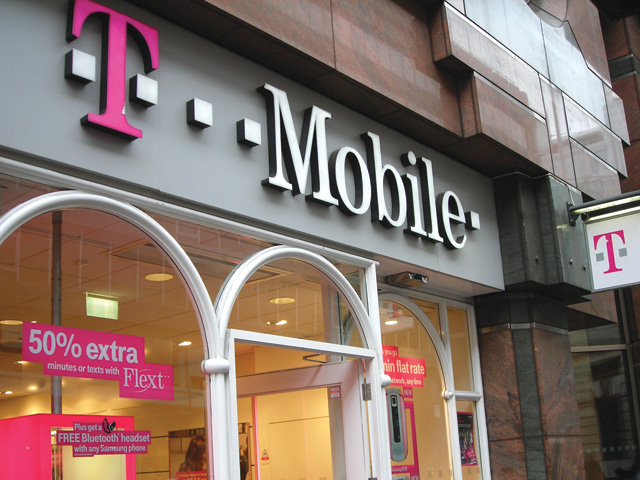












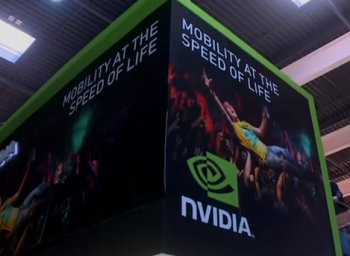
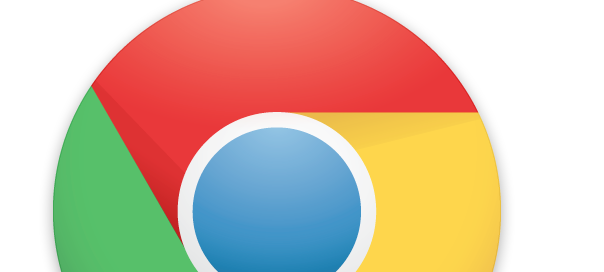

No comments:
Post a Comment